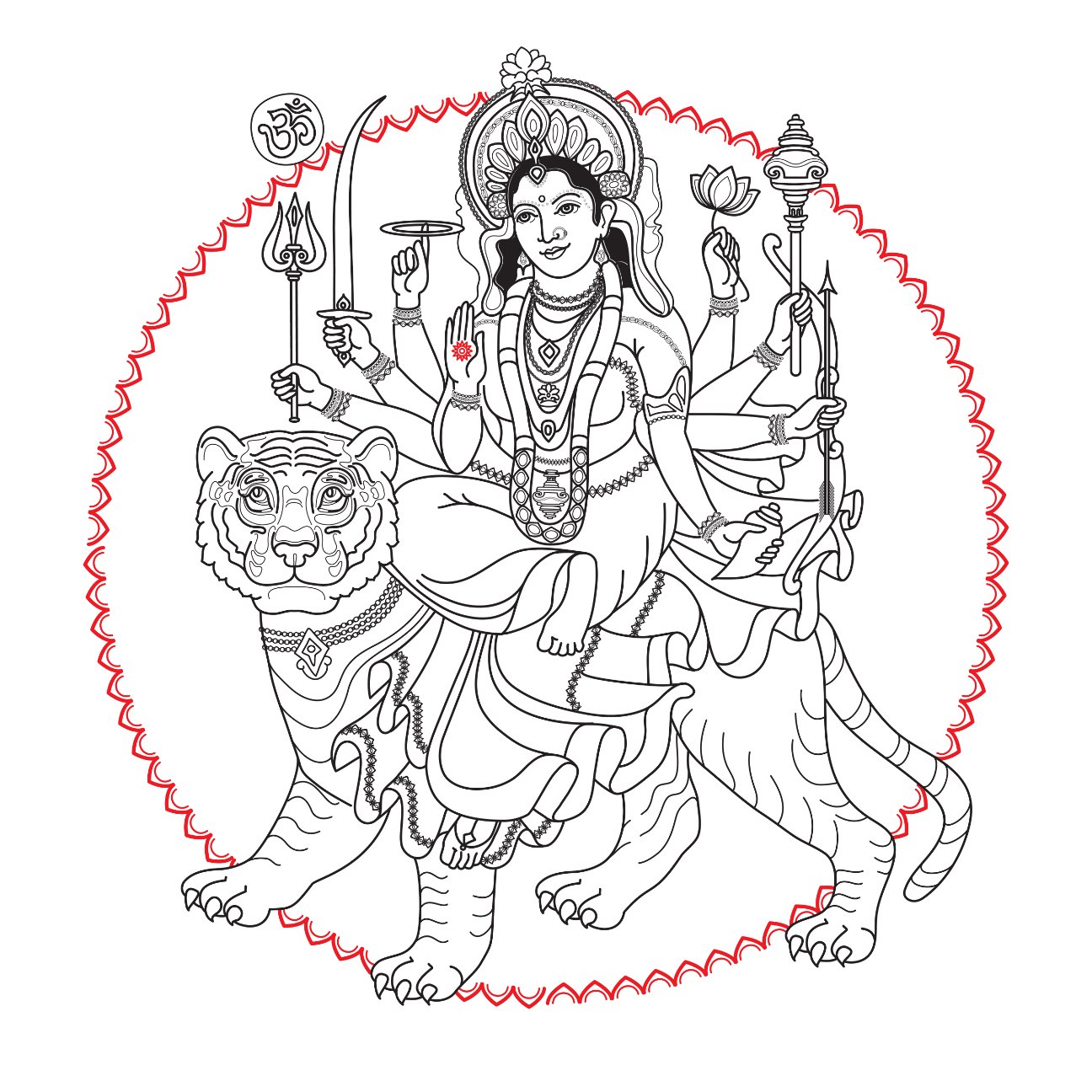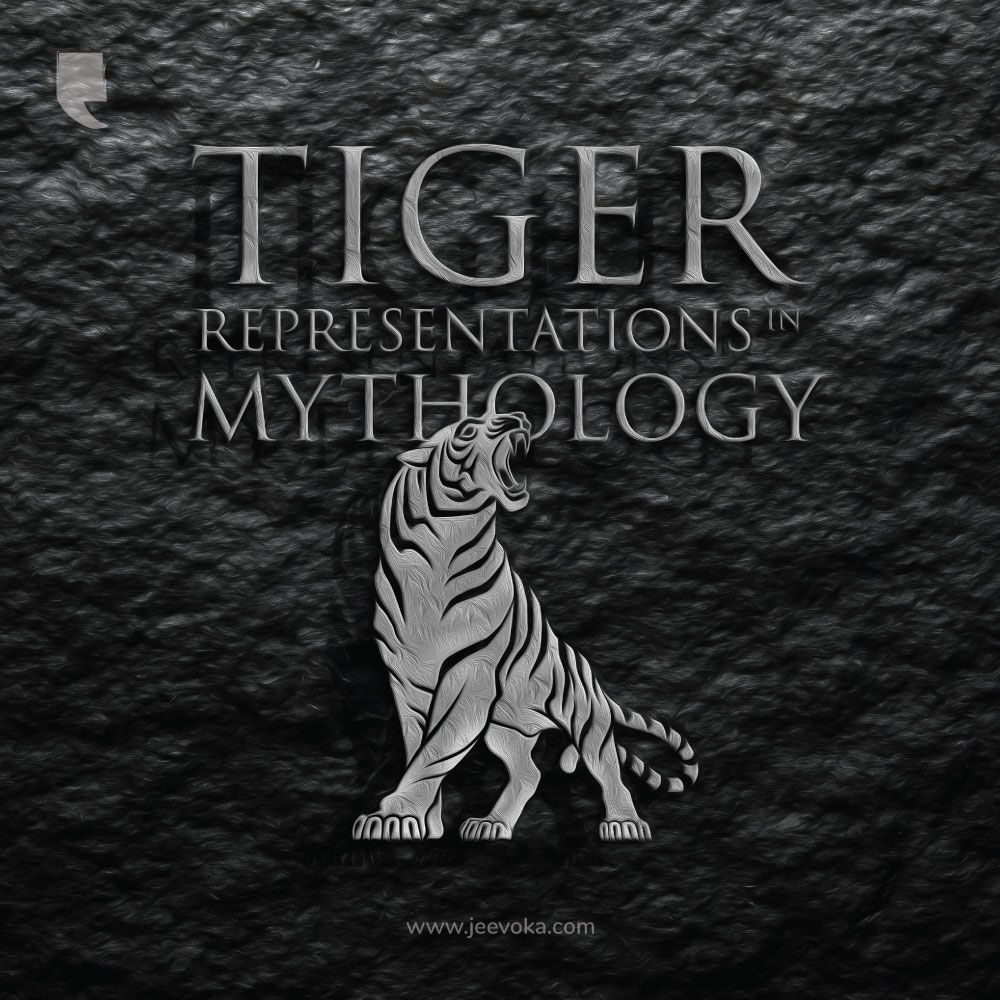Animals play a significant role in mythology. Here’s how the tiger has been one of the most prevailing figures in some Indian religions!
The Bengal tiger is India’s national animal – and for good reason, too. It has captivated the people of the subcontinent since time immemorial – feared and revered at the same time. Its stories have been interwoven with our gods and legends, giving it the mythical status it enjoys today. Indeed, even the discoveries of famous landmarks have been credited to the tiger -- like the once lost Ajanta caves.
Some of the earliest depictions of the tiger and gods date back to 2500 BC on Harappan seals with a famous one depicting a female deity strangling two tigers. One may even look at it as one of the earliest representations of human-tiger conflict. Even older pictures of tigers are found in rock art, particularly in Madhya Pradesh, dating back 10,000 years or more.
Tigers and the lives of the people of India have thus been long intertwined, giving rise to several myths and legends surrounding them. While these stories can fill a book, here are some of the most popular depictions of the tiger in Indian culture.

As the Vehicle of Durga:
The tiger features in the myths and legends of different cultures throughout India – the best known of which is probably as Durga’s vahan (vehicle). Durga and her tiger symbolise the powerful union of the sacred feminine force and Mother Earth that can fight evil without fear.
Lord Ayyappa’s mount:
In Kerala, Lord Ayyappa, the son of Shiva and Mohini, is depicted riding a tigress accompanied by her cubs, bearing a vessel of a tiger’s milk. It was this feat that made the people of Pandalam accept his role as a divine being.
The Tribal Protector:
Given that many tribes in the country live in or close to forested areas, it is only natural that the tiger features strongly in their mythology. The Bharias of Central India believe in Bagheshwar, the tiger god. They believe that because of Bagheshwar’s protection, no Bharia will be eaten by a tiger. During Diwali, they place a bowl of gruel behind their houses for tigers. In the morning, an empty bowl signifies that the house has been visited by Bageshwar. The Baiga tribe believes they are descendants of the tiger. Another belief in the same region is that the tiger is will bring the rainfall farmers need and any insult to the tiger will result in drought.
The Warli tribe of Maharashtra, famous for their paintings, worship the tiger too. Here, the tiger is a symbol of fertility and is believed to bring a good harvest. Rituals involve statues of tigers surrounded by flowers, birds, and snakes.
Tigers aren’t revered by tribes in Central India alone. Bonobibi is another goddess who rides a tiger. She is worshipped by Hindus and Muslims alike in the Sundarbans. She is believed to protect the various members of the community from tiger attacks when they enter the forests to gather honey, wood, and to fish.

The Northeast of the country has several stories surrounding the tiger, too. A popular belief among the Naga tribe is that the cosmic spirit, man and tiger are brothers. When their mother was dying, the tiger was sent to live in the jungle as he could smell their mother’s dying flesh. The belief that the tiger is a man’s brother meant that the Naga tribe's people would rarely kill a tiger. Another version of the story is that the tiger was tricked into living in the jungle by man, which meant that man could not see the cosmic spirit anymore. The rituals performed to worship the tiger today are in the hope that the three brothers can unite once more.
This holy union of man, nature and the spiritual world forms an underlying theme through many of the beliefs surrounding tigers. While the cosmic spirit refuses to be seen by man, it is up to us to ensure that man doesn’t lose his other brother too.
Sources:
Mohanty, Prasanna Kumar. Encyclopaedia of Primitive Tribes in India. Vol. 2. Gyan Publishing House, 2004.